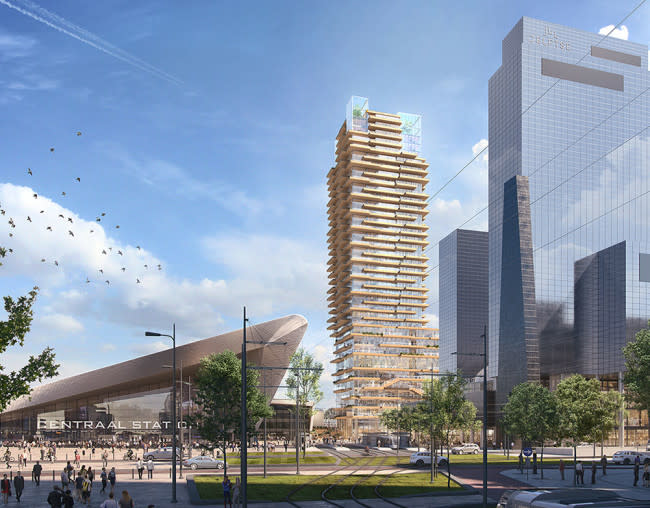Exploring Efficient Design: Is Using Wood To Build High-Rise Buildings Sustainable?
Several study projects by London-based PLP Architecture showed that wood can be used as a sustainable material to develop high-rise buildings.
The firm had been working with the University of Cambridge, structural engineers, materials engineers and chemists for these studies. After four years, they found that wood can be used to build such buildings.
“Yes, you can build buildings of about 300 metres out of wood and that will be incredibly sustainable. It would make it very easy for projects to be net carbon negative rather than adding to the problem,” said PLP Architecture Founding Partner Ron Bakker, who served as an expert panellist at the Exploring Efficient Design webinar.
“And if you look at timber as something that grows in a farm, then it’s a material that works beautifully.”
Organised by PropertyGuru Asia Real Estate Summit, the one-hour web conference held on 25 June attracted about 300 viewers from more than 20 countries.
The future is timber
Photo Credit: e-architect/St. Paul’s Cathedral
Since wood is usually used to build two- to three-storey buildings, Bakker admitted that the concept of developing a high-rise building using such material went through various issues such as the structural technologies of bioengineering, fixings, acoustics and material science.
They also had to take into account the durability and integrity of wood. He noted that most of the engineered wood utilised by the construction industry is softwood. While it is inexpensive since they can grow quickly, softwood has to be kept inside since it can be damaged by ultraviolet rays, does not do well in rain and is a favourite snack of bugs.
Thus, timber can be protected by keeping it behind glass or inside building. Bakker underscored that the seven-hundred-year-old structure holding the climbing of the dome within St. Paul’s Cathedral is made out of local oakwood.
An award-wining hybrid structure
Photo Credit: PLP/Architecture
He also revealed that they had successfully developed an award-winning mixed-use development in the heart of Rotterdam, The Netherlands. Located right next to a train station, the development will feature timber at the structure of its residential component.
He shared that they had spoken with the fire department to ensure that the building is compliant to all relevant regulations and that future residents are safe and secure.
While the real estate industry used to be held back by costly and limited options from going green, the industry can now help fight climate change, thanks to innovative leaders who came up with solutions that do not put the environment at risk.
Aside from the environmental benefit, wood had also been aesthetically associated with a feeling of warmth. In fact, plenty of studies had shown the health benefits of wood to various users, like better concentration for children at school as well as positive social interactions at home, said Bakker.




